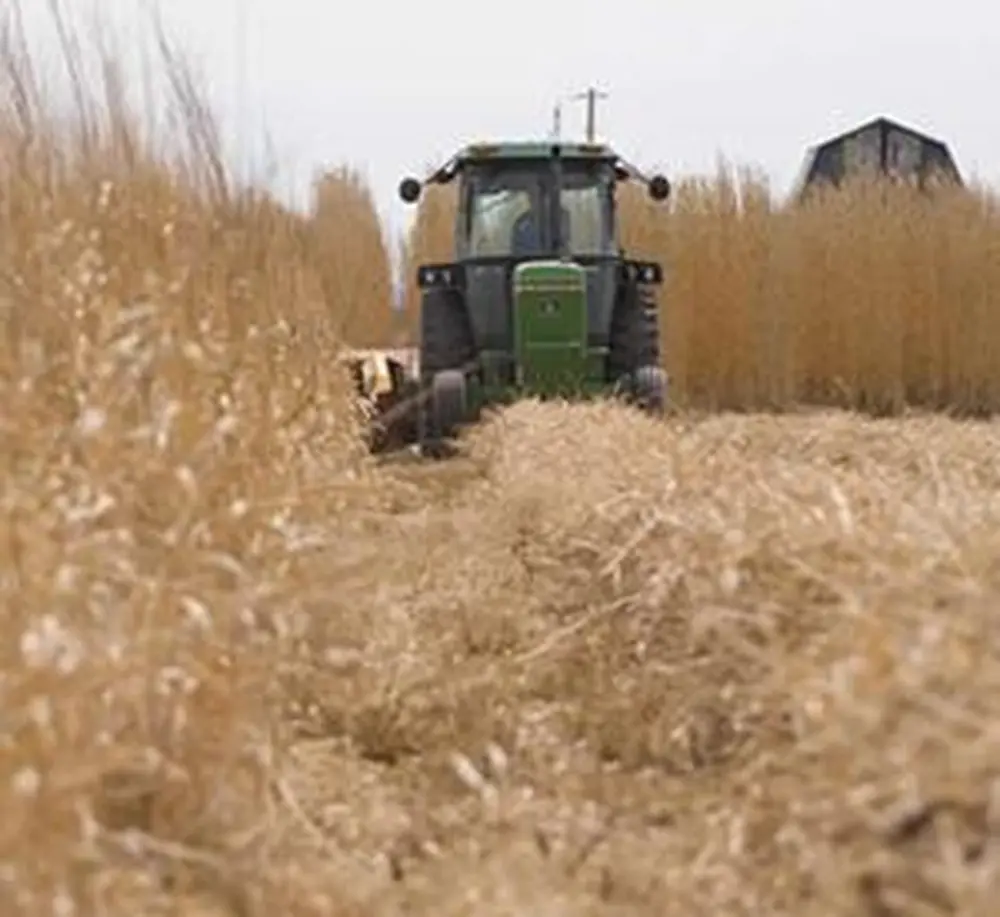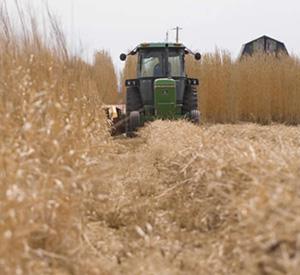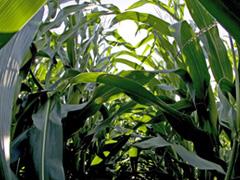

Converting certain grasses to biofuels could do more to reduce greenhouse gas emissions than current methods using corn, according to a researcher in LAS.
Perennial grasses such as switchgrass and Miscanthus are better than corn at preserving and increasing carbon stores in soil, which can influence carbon dioxide levels in the atmosphere, according to Evan DeLucia, professor of plant biology. The top meter of soil contains more than three times the amount of carbon than either vegetation or the atmosphere.
As a crop, perennial grasses would improve soil carbon because of their extensive root system and reduced plowing, DeLucia says. When the land is disturbed, as during plowing for corn, some soil carbon enters the atmosphere as carbon dioxide.
“From the time that John Deere invented the steel plow, which made it possible to break the prairie sod and begin farming this part of the world, the application of row crop agriculture in the Midwest has caused a reduction of soil carbon of about 50 percent,” says DeLucia, an author on a new study.

About 20 percent of the U.S. corn crop currently goes into ethanol production. With that in mind, researchers analyzed the effect that corn, sugarcane, and various grasses had on soil carbon. While sugarcane and corn reduced carbon in the soil, perennial grasses quickly increased the levels of soil carbon as the grasses became established.
Currently, ethanol is produced by fermenting the starch in corn kernels, but significantly more liquid fuel energy can be harvested from the stems and leaves of plants. Many believe this type of “cellulosic” ethanol will displace corn ethanol as technology advances.
While it’s possible that the leaves and stems of corn plants could also someday be used for ethanol, DeLucia says it is unlikely that corn plants would ever be as economically viable as perennial grasses, as fertilizer and cultivation costs for corn are higher than grasses and would increase with fuel prices.
Besides, he says, grasses would be more ecologically beneficial regardless of costs.
“From a purely carbon perspective, our research indicates that putting perennial biofuel crops on landscapes that are dominated by annual row crops will have a positive effect on soil carbon,” DeLucia says.

He admits that the finding would enter the food-for-fuel debate, though he argues that since 20 percent of the corn crop is used for biofuels anyway, it would make sense to use that land for higher yielding grasses that also increase the organic carbon in soil.
He also acknowledges that converting perennial grasses to ethanol is still too expensive to make it economically viable on a large scale. Biofuels, in general, pose many questions, such as whether infrastructure can support a growing biofuels industry. The National Science Foundation is funding new research at LAS and U of I to analyze engineering, economic, social, and environmental constraints of supporting a bioeconomy.


